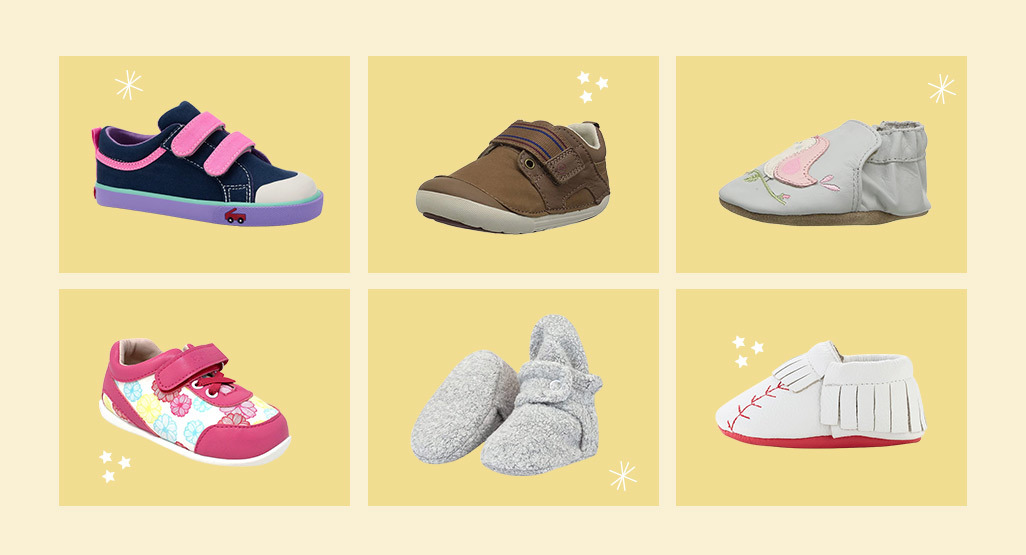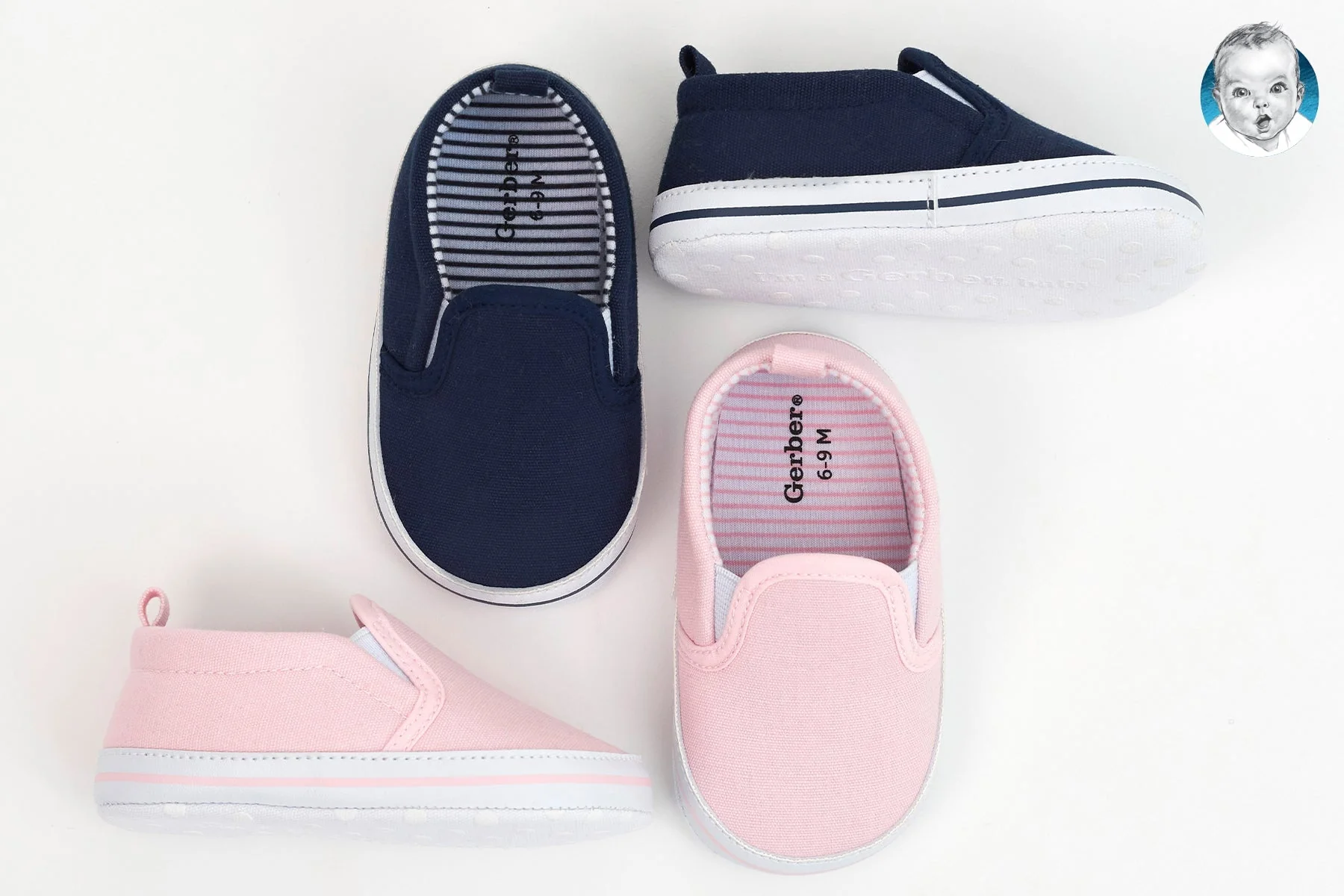Comfort and Care: The Essentials of Crib Shoes for Your Little One.
Crib shoes are specially designed soft, lightweight footwear crafted to provide gentle support and protection for infants' delicate feet. These shoes feature flexible soles that mimic barefoot walking, promoting natural foot development and allowing for unrestricted movement as babies begin to explore their surroundings. With their gentle materials and comfortable designs, crib shoes offer a cozy and nurturing experience for infants during their early stages of growth and development.
Nurturing Every Step: Exploring Soft Sole Shoes for Infants and Toddlers.

Soft sole shoes, designed for delicate comfort and support, play a crucial role in the early stages of an infant's development. In this comprehensive guide, we delve into the world of soft sole shoes, providing a broad definition of their purpose and construction. We'll explore their various uses, different types available, the benefits they offer, key features that set them apart, any potential disadvantages, essential maintenance tips, and insights from user reviews.
Definition.
"Crib shoes, specifically designed for infants, are soft, lightweight footwear intended to provide gentle support and protection for a baby's developing feet. These shoes are crafted with delicate materials and flexible soles to ensure comfort and unrestricted movement, allowing infants to explore their environment safely during the early stages of development."
Uses of Crib Shoes:
- Support for early walkers: Soft sole shoes offer stability and protection for infants taking their first steps.
- Comfortable playtime: They ensure comfort during play, allowing the child to explore their surroundings with ease.
- Indoor and outdoor wear: Soft sole shoes are suitable for both indoor and outdoor activities, safeguarding the child's feet from potential hazards.
Types of Crib Shoes:
- Soft Sole Crib Shoes: These feature a gentle, flexible sole, ideal for providing protection while allowing natural foot movements.
- Bootie-style Crib Shoes: These often come with a higher ankle design, providing extra warmth and support, especially during cooler weather.
- Crib Sneakers: These mimic the appearance of sneakers, offering a stylish yet comfortable option for infants during play and exploratory activities.
- Crib Sandals: These open-toe or strap-style shoes are suitable for warmer weather, ensuring breathability and comfort for your baby's feet.
- Crib Moccasins: These traditional-style shoes provide a cozy and secure fit, often featuring soft, breathable materials perfect for everyday wear.

Benefits of Crib Shoes:
- Encourages natural foot development: Soft sole shoes allow the feet to flex and grip the ground naturally, aiding in the development of balance and coordination.
- Provides sensory stimulation: The soft and flexible materials provide sensory feedback, helping infants to understand the surfaces they are walking on.
- Lightweight and comfortable: These shoes offer a lightweight and cozy option, ensuring the child's comfort and ease of movement during play and exploration.
Features of Crib Shoes:
- Soft and Gentle Construction: Crib shoes are designed with soft, delicate materials to provide comfort and protection for a baby's sensitive feet.
- Flexible Soles: These shoes often feature flexible, non-restrictive soles that allow natural movement, promoting healthy foot development.
- Breathable Linings: Many crib shoes come with breathable linings, preventing sweat and discomfort, and keeping the baby's feet cool and dry.
- Easy Fastening Options: Crib shoes typically have easy fastening options such as Velcro or elastic bands, making them convenient for parents and caregivers to put on and take off.
- Supportive Insoles: Some crib shoes include gentle arch support and cushioning to provide extra comfort and protection during the early stages of walking.
- Adorable Designs: They come in various adorable designs, colors, and patterns, adding a touch of style to your baby's early wardrobe.
Disadvantages of Crib Shoes:
- Limited protection: Soft sole shoes may not offer as much protection as traditional shoes, leaving the child's feet vulnerable to sharp objects or rough surfaces.
- Durability concerns: Some soft sole shoes, particularly those made of fabric, may wear out quickly, requiring frequent replacements as the child grows.
Differences between Crib Shoes, Baby Shoes, and Baby First Walkers:
Crib Shoes:
- Designed for infants in the early stages of development, typically from birth up to around 9 months.
- Feature soft, flexible soles that mimic barefoot walking, promoting natural foot development and providing gentle protection.
- Primarily focus on providing comfort and warmth for delicate newborn feet during sleep and playtime.
Baby Shoes:
- Intended for slightly older infants who have started crawling and are in the process of learning to walk, typically around 9 months to 1 year.
- Often equipped with sturdier soles and additional support to aid in the transition from crawling to walking.
- Designed to provide more protection and stability for active babies as they begin to explore their surroundings.

Baby First Walkers:
- Geared towards toddlers who have just begun taking their first independent steps, usually between 1 to 2 years of age.
- Feature more robust soles and added grip to support the toddler's evolving walking abilities and offer increased stability.
- Aim to provide a balance of protection and flexibility, aiding in the development of proper walking mechanics and coordination.
Tips for choosing the right Crib Shoes:
- Soft and Flexible Materials: Opt for crib shoes made from soft, breathable materials to ensure comfort and unrestricted movement for your baby's developing feet.
- Proper Fit: Choose shoes that fit snugly without constricting your baby's feet, allowing for natural movement and growth.
- Non-Slip Soles: Look for crib shoes with non-slip soles to provide traction and stability for early walkers, preventing any accidental slips or falls.
- Easy Fastening: Select shoes with simple fastening options such as Velcro or elastic bands to ensure quick and hassle-free wearing and removal.
- Breathability: Consider crib shoes with breathable linings to prevent sweat and discomfort, keeping your baby's feet cool and dry.
- Supportive Design: Opt for shoes with gentle arch support and cushioning to provide additional comfort and protection during your baby's early explorations.
- Room for Growth: Choose shoes that allow some room for your baby's feet to grow, ensuring the shoes remain comfortable and accommodating as they continue to develop.
Maintenance of Crib Shoes:
- Regular Cleaning: Gently wipe the shoes with a damp cloth to remove any dirt or spills.
- Air Drying: Allow the shoes to air dry naturally to avoid any potential damage that may occur with heat.
- Mild Washing (if applicable): If the shoes are machine washable, use a gentle cycle with mild detergent, and air dry afterward.
- Inspect for Wear and Tear: Regularly check the shoes for any signs of wear or loose stitching to address any issues promptly.
- Storage: Keep the crib shoes in a clean, dry place away from direct sunlight to maintain their quality and prevent any discoloration or deformation.
- Sizing Check: Monitor the baby's foot size regularly to ensure the crib shoes still fit properly and accommodate their growth.



